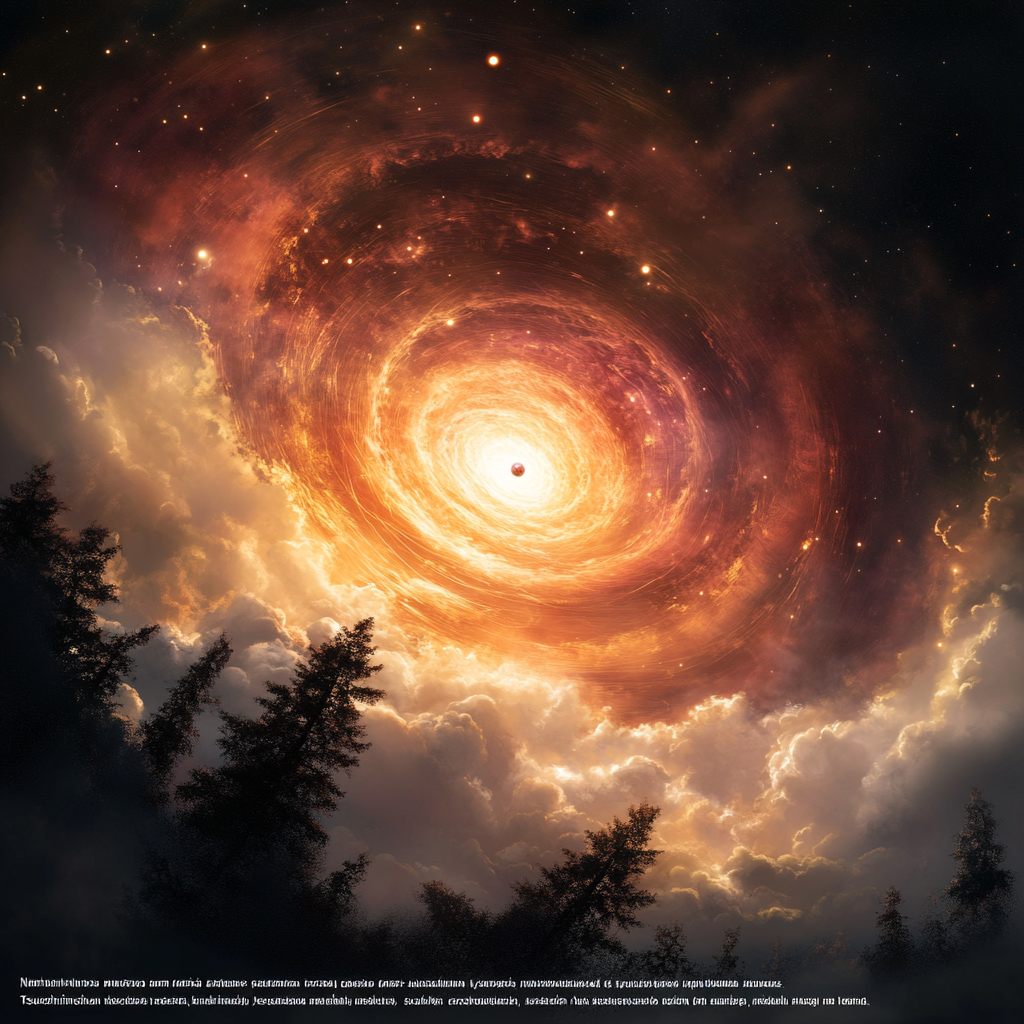
“Spectacular Celestial Show: Comet Tsuchinshan-ATLAS Captivates Earth and Space Observers”
Comet Tsuchinshan-ATLAS: The Cosmic Show That Everyone's Buzzing About
Picture this: it’s the early hours of October 2024, and the vast, unyielding universe decides to bless us mere mortals with a dazzling display of cosmic majesty. The star of this show? Comet Tsuchinshan-ATLAS, or C/2023 A3 for those who prefer nomenclature over flair. This celestial wonder isn’t just capturing the attention of folks armed with telescopes and binoculars on Earth; even astronauts floating about in the International Space Station are pausing their floating routines just to take it all in. Yes, you guessed it—this cosmic traveler is stealing the spotlight in the skies above!
A Journey Back in Time: Discovery of Tsuchinshan-ATLAS
Let’s kick it off with a little history. Imagine the fast-paced world of comet hunting, where the initial spark of recognition was ignited back on January 9, 2023. A diligent team at the Purple Mountain Observatory in China chanced upon what they thought was just another rock hurtling through the cosmic void, a humble asteroid, if you will. But wait! Fast forward to February 22, and the sharp-eyed folks at the Asteroid Terrestrial-Impact Last Alert System (ATLAS) in South Africa turned the tables, declaring it a comet. Surprise, surprise! One minor discrepancy in classification, and here we are, gearing up for the comet of the decade. Isn’t the universe just full of delightful surprises?
Celestial Spectacle on the Horizon: Visibility and Viewing Times
Now, what good is a comet if you can’t see it, right? Well, Tsuchinshan-ATLAS is here to take care of that. This beauty last swung by our neck of the cosmic woods about 80,000 years ago. Yes, you heard that right! Our long-lost friend is back, and for those keen on catching a glimpse, you’ll want to wake up early during its brief visit—the mornings just before sunrise are your golden hours. The viewing window stretches until October 2, with another chance from October 12 to 30. Mark your calendars, set your alarms, and brace yourselves—it's closest approach on October 13 promises a celestial spectacle that could knock your socks off!
How to Spot the Shining Wonder: Observing Tips and Techniques
Now that we’ve established that this comet is no ordinary rock whizzing by, let’s talk about how you can catch a glimpse of it. You don’t need to be a seasoned astronomer with an observatory decked out in high-tech gear to join the cosmic party. A few simple tips will set you up for success:
-
The Timing and Location Game: Lucky for you, Tsuchinshan-ATLAS can be spotted from both hemispheres. Use resources like Comet Chasing or PhotoPills to plan your viewing sessions. Timing is everything!
-
Get Yourself Some Gear: Let’s bust the myth that you need fancy equipment to see this celestial diva. Binoculars or even a good smartphone camera with a wide-angle lens will do! If you want to kick it up a notch in the photography game, whip out a trusty telephoto lens for those detailed shots.
-
Picture Perfect: When it comes to capturing this cosmic beauty, a tripod can be your best friend. Get your camera into manual mode and adjust the ISO and exposure time. If you've got a Nikon Z9, try setting your ISO at 6400 and your exposure to 1/8th of a second. Voilà! You’re ready to seize that moment.
The Beauty Captured: Photos and Videos from the Sky
As the comet charms its way through the cosmos, it hasn’t gone unnoticed. Photographers on Earth and astronauts aboard the ISS have documented this ethereal journey in ways that could make even the most hardened cynic shed a tear of joy.
From the ground, talented photographers like Abhijit Patil—who captured the comet casting a faint trail above the horizon from Lick Mt. Hamilton, California—to Lorenzo Di Cola—the maestro of the early morning shot—have gratified our eyes with stunning images. But wait, there’s more! Up in the ISS, astronauts Don Pettit and Matthew Dominick have been playing cosmic paparazzi living their best lives. Pettit’s cosmic captures immortalize the comet sailing alongside a meteor, while Dominick’s work presents a jaw-dropping view of the comet gracing the horizon, complemented by a sweeping aurora. Can you feel the chills yet?
The Community of Star Gazers: Join the Fun!
Feeling a tad lost in the vast universe of comet chasing? Don’t fret! You’re not alone, and that’s what makes this cosmic voyage even more fascinating. There are plenty of communities out there eager to share knowledge, tips, and cosmic camaraderie.
-
Get In On the Action: Joining the Comet Chasing community will arm you with regular updates, invaluable tips, and insights into the world of astronomy.
-
Upgrade Your Skills: Don’t forget to check out handy photography guides on platforms like YouTube. With videos detailing how to plan your celestial adventure, you’ll be all set to capture the spectacular wonders up there.
Time to Go Stardust Chasing!
As Comet Tsuchinshan-ATLAS paints its dreamy trail across the celestial stage, it's clear this is a moment we’ll all remember. Whether you’re a seasoned astrophotographer, a curious novice, or someone intrigued by the sheer beauty of the universe, now’s your chance to step outside, gaze upwards, and join in on the cosmic jubilee. Let the heavens inspire you, move you, and connect you to something far greater than the mundane grind of daily life.
So, what are you waiting for? Prepare for the show of a lifetime!
Want to stay up to date with the latest news on celestial events and astronomy? Subscribe to our Telegram channel: @channel_neirotoken

